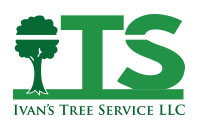Trees and Property Lines: What are the Rules?
Neighboring homeowners can often dispute because they don’t know what the laws and procedures are when it comes to trees on or near the property line. We’re here to give insight on those procedures and save you the headache of a shouting match over the fence.
Tree Trimming Laws in Minnesota
Sick of your neighbor’s tree growing branches into your yard? Want to also avoid having to take care of the bill if that branch falls onto house, shed, fence, etc?
If you’re concerned and your neighbor isn’t, you can legally trim a branch that hangs over onto your property in Minnesota, but only up to the property line. This is called “self-help.” Although there is risk and should be handled by professionals, this may be a viable option to avoid headache in the future as the laws of property damage from a neighboring tree can get a little murky. If the tree is properly maintained under the reasonable care standard, then the neighbor is not liable for a storm or “Act of God” related incident where a portion of the tree falls on your property. Foreseeability is the common word thrown around in these cases, so if a tree is unstable, rotten, unkempt, etc. the court can deem this as a foreseeable outcome, and you would not be fronting the bill. Like we said – murky.
Shared Trees
In a different case, neighbors may share a tree on the property line. This is because trees often represented the property line before we had the precision we do today. Regardless, shared trees offer a different challenge to homeowners on either side.
To start, a tree is determined part of a property if the entire trunk is on one side. So, if the majority of the tree hangs onto one side, but the trunk is on the other, the tree still belongs to the trunk side. In most states, if a tree trunk is on both sides of the property line, the tree is shared and may not be removed by either party without an agreement by both parties. In Minnesota law, having the trunk on both sides on the line doesn’t mean shared ownership in of itself, but should both parties split the costs of pruning and maintaining a boundary tree, they are considered co-owners.
View Ordinances & Other Standards
As stated above, trees on boundary lines provide many different problems and interesting situations that could result in some conflict. View Ordinances can be something to look out for as, in some circumstances, planting a tree in front of another property’s view or even cutting down/trimming a tree that was blocking a bad view can be investigated for a possible violation. Some incidents have involved fruit trees and the fruit they provide. If a branch hangs into your property, the fruit still belongs to the owner of the tree and if the fruit drops into the yard the ruling does reach a gray area because to sue for the fallen goods might not be “fruitful.”
Knowing the rules and laws of trees on or near your property is important as a homeowner. We will always suggest that you speak with the other party involved before doing anything that could impact their property. Although, if one of these incidents do arise, please contact your local real estate attorney and our certified team of arborists at Ivan’s Tree Service who specialize in tree trimming and are more than happy to help. We offer free estimates and individualized service. Give us a call at 651.485.8670 today.
